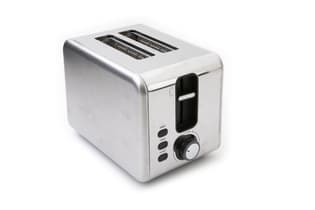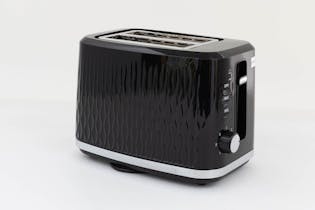Butter or margarine: Which table spreads are best?

With the price of butter soaring, you may be thinking of switching to another table spread. However, some spreads are better than others for your waistline and the planet. We’ve assessed 41 products to help you make a better choice.
Chewing the fat
The main ingredient in butter and most other table spreads is fat. Butter has about 80% fat, and the table spreads in our survey ranged from 40% to 80%.
But not all fats are equal. Fats and oils are composed of fatty acids – saturated, trans, monounsaturated and polyunsaturated. Different oils and fats have varying levels of these fatty acids (see “All about fat”).
It’s the saturated fat, together with the energy and sodium, that influences the health star ratings for table spreads. Health star ratings assess a food on its overall nutritional value – half a star to five stars (the more stars the better).
No spreads in our survey earned five health stars. However, Flora Pro-activ Light (a plant sterol spread) earned four-and-a-half stars, and eight spreads achieved four stars: Essentials Table Spread, Flora Light, MeadowLea Lite, Pams Lite Canola Spread, Pams Lite Olive Spread, Pams Value Table Spread, Sunrise Table Spread and Tablelands Spread Dairy Free Buttery.
The saturated fat content of these spreads was 12.3% or less, and they all had sodium levels of 360mg or less. That’s a lot less than regular butter, which has over 50% saturated fat and higher sodium (about 500mg) so only gets half a star. The unsalted butter is slightly better due to its low sodium content (7mg), but still only earns one star.
It's a similar story for spreadable butter. Mainland Buttersoft 100% Pure Spreadable Butter Salted, which according to the company’s website is triple churned to make it spreadable, has similar saturated fat and sodium levels to a block of butter so also only gets half a star. The salt reduced version, like salted regular butter, gets one star.
Butter blends – spreads that combine butter or buttermilk softened with vegetable oil – have less saturated fat. Country Soft Lite gets three-and-a-half stars. Country Soft, Flora Buttery and Pams Buttery Spread are three-star spreads.
The olive oil-based spreads range from two-and-a-half stars (Tablelands Olive Oil Spread) to four stars (Pams Lite Olive Spread). You might be surprised to learn the main oil in these spreads isn’t necessarily olive. The spreads in our survey ranged from 14% to 21% olive oil – you’ll find this information listed in the ingredients list. Other oils used in these spreads include canola, palm or unspecified vegetable oils.
It’s a similar story with other spreads touting a particular oil. For example, Olivani Avocado only contains 7.5% avocado oil, with unspecified oils making up one-third of the oil content.
Which table spreads are low in saturated fat?
We assessed 41 table spreads — check out the full nutrition information for each product here.
Hover or tap on the charts to see the health star rating.
Table spreads
Butter blends
Butter
Plant sterol spreads
The good oil?
Many table spreads didn’t specify the type of oil they contain. There’s no requirement for manufacturers to disclose this information unless the oil is a characterising ingredient (such as olive oil in an olive oil spread).
Instead, you might find the catch-all “vegetable oil” in the ingredients’ list: and there’s a good chance that could mean palm oil.
Palm and palm kernel oils are high in saturated fat. Their production is also linked to deforestation and the destruction of the habitat of endangered species such as the orangutan.
A 2018 study published in the journal Science estimated palm oil production also generated more greenhouse gas emissions than soybean, olive, rapeseed or sunflower oils.
To quell criticisms, the industry-led Roundtable on Sustainable Palm Oil (RSPO) was set up to certify “good” oil. However, the criticisms continue because of inadequate traceability of the oils used and failure to guarantee the oil that ends up in products is sustainably produced.
Supermarket home-brand spreads (Essentials, Pams and Pams Value) were upfront and listed palm oil in their ingredients.
We asked other companies to disclose what vegetable oils were in their products.
Fonterra (Anchor Original and Country Soft spreads) said RSPO certified palm oil is the unspecified vegetable oil in its spreads. Nuttelex said depending on the product its spread can include a combination of sunflower, canola, coconut and certified sustainable palm oil. Goodman Fielder (MeadowLea, Olivani, Sunrise and Tararua spreads), Upfield (Flora spreads) and Tablelands Spreads did not provide the information.

The butter debate
Butter has gained favour as a “natural” option. But when it comes to making a greener choice, there’s widespread agreement we need to cut back on dairy. This is mainly due to the methane emissions from dairy herds and the use of nitrogen-containing fertilisers on dairy land, which are known to run into and affect our waterways.
From a health perspective, the “butter is better” mantra also doesn’t stack up well.
Dave Monro, Heart Foundation chief adviser food and nutrition, said for heart health the evidence supports replacing saturated fats with unsaturated fats because there’s a strong link between saturated fats, elevated blood cholesterol and heart disease.
“That means getting the fats in our diet mainly from foods like healthy oils, oily fish and plant sources like avocado, nuts, seeds, legumes and grains,” he said. “Using table spreads as a replacement for butter is one way of helping achieve this, and there’s a variety of options that are a mix of butter or butter milk with oils that people can consider if they want a buttery taste with less saturated fat.”
If you want to choose a less-processed option, Monro said avocado, nut and seed butters and hummus are great choices.
“If you choose to stick with butter, the amount and how often you eat butter is important, as well as considering the other sources of saturated fat in your diet,” said Monro.
Food policy expert panel co-chair at Health Coalition Aotearoa, Dr Sally Mackay, said while “whole” or less-processed foods are usually recommended over ultra-processed foods, there are some foods where the ultra-processed option is the healthier choice, as is the case with butter compared with other table spreads.
“Table spreads have been formulated to have a healthier mix of fats, which is better for cholesterol levels,” she said. “The additives, like emulsifiers, are needed to keep the ingredients mixed and to provide a smooth consistency.”
Dr Mackay said for someone who eats mainly minimally processed foods, a small amount of butter is OK, unless they have a high risk of heart disease. But for others, the risk of high cholesterol levels from butter’s saturated fat content could be more detrimental than the potential risk of additives in table spreads.
The World Health Organization recommends we get less than 10% of our energy intake from saturated fats.
Plant sterol spreads
Some spreads contain plant sterols, natural substances that have a similar structure to cholesterol and trick the digestive system into absorbing less of the real stuff.
Studies report regular consumption of cholesterol-lowering spreads may reduce your “bad” cholesterol. But these products are pricier than regular spreads, and you have to eat about 25g of the spread each day to get the necessary level of benefit.
If you’re taking medication to lower your cholesterol, check with your doctor whether including plant sterols in your diet will provide any additional benefits. These spreads give no benefits if your cholesterol levels are normal.
What’s in your table spread?
- Vegetable oil: The main ingredient in most table spreads is vegetable oil. Common oils used are canola and sunflower.
- Water: The less fat in the table spread, the more water it contains. For some lower-fat spreads, water is the main ingredient.
- Emulsifier: This is added to keep the oil and water mixed. Butter contains lecithin, a natural emulsifier.
- Salt: Salt (sodium chloride) adds flavour, but too much sodium is bad for your health.
- Colour and flavours: Milk fat is sometimes added to give the spread a dairy flavour and to enhance the spread’s “mouthfeel”. Colour is often added to get the yellow colour we expect in a table spread.
- Preservatives: These are added to prevent spoilage.
- Acidity regulator: An acid, such as citric or lactic, is used to control the pH (acidity). This affects microbial growth and oxidation.
- Vitamins: Vitamins A, D and E can be added. Most table spreads have added vitamins.
All about fat
Saturated fat raises the total cholesterol and levels of “bad” low-density lipoprotein (LDL) cholesterol in your blood. Saturated fats can also promote blood clotting, which can lead to heart attacks or stroke. Saturated fats are found in animal fats, as well as palm and coconut oil. In butter, the fat comes from cream.
Trans fat raises total cholesterol and LDLs and may also decrease your levels of “good” high-density lipoprotein (HDL) cholesterol. Small amounts of trans fats occur naturally in butter, but harmful trans fats are formed when liquid oils are hydrogenated to harden them and make them more stable to use. Most table spreads now contain less than 1% trans fats – a vast improvement on the 8% some products contained in our previous surveys.
Polyunsaturated and monounsaturated fats are “good” fats. They help lower LDLs, and monounsaturates are thought to raise HDLs. Canola, avocado and olive oils are high in monounsaturates. Sunflower and soya bean oils are high in polyunsaturates. Butter has lower levels of monounsaturates and polyunsaturates.
Our report on cooking oils has information about the ratios of fatty acids in different cooking oils, including butter.
We've tested 47 toasters.
Find the right one for you.


.jpg&w=315&q=75)
Member comments
Get access to comment